Google Pixel 3 Lite
-
Processor: 2x 2.0 GHz Kryo 360, 6x 1.7 GHz Kryo 360, Cores: 8
-
RAM: 4 GB, 1866 MHz
-
Storage: 32 GB
-
Display: 5.56 in, IPS, 1080 x 2220 pixels, 24 bit
-
Camera: 4032 x 3024 pixels, 3840 x 2160 pixels, 30 fps
-
Battery: 2915 mAh, Li-Ion
Google Pixel 3 Lite specifications leaked by Russain bloggers who also leaked Google Pixel 3 XL’s details back then. Since both the smartphones, Google Pixel 3 and Google Pixel 3 XL are launched officially, we know everything about it.
The mysterious code name of Google Pixel 3 Lite is Sargo. The phone is powered by Qualcomm Snapdragon 670 with a 3.5mm headphone jack.
Google Pixel 3 Lite mocked Apple for removing its headphone jack and later the launched Pixel 3 and Pixel 3 XL and both of them didn’t have headphone jacks but with the release of Google Pixel 3 Lite the trend won’t continue anymore.
The smartphone comes with a size of the display is 5.56 inches, IPS type with a resolution of 1080 x 2220 pixels. The smartphone is fueled with 2915 mAh, Li-Ion battery.
The smartphone runs on Android 9.0 Pie operating system for smooth functionality of the phone. The phone is pack with 4GB RAM and 32 GB internal storage.
The phone gives a 12 megapixels for rear camera and 8 megapixels at front for better selfies. For the latest phones and tablets, check out giztop.com and get best deals, coupons, offers, comparison, reviews and more!
Google Pixel 3 Lite - SPECIFICATIONS
General
-
ModelGoogle Pixel 3 Lite
-
ReleasedNov, 2018
-
StatusAvailable
Design
-
Type Design Type called form factor refers to a mobile phone's size, shape, and style as well as the layout and position of major components of phone. There are three major form factors seen in mobile phones => bar phones, folding phones and sliding phones.Bar
-
WeightGrams
-
WaterproofNo
Display
-
Display Type Display Technology => A number of display technologies and types used in mobile phones => TFT (Thin Film Transistor), IPS (In-Place Switching), OLED (Organic Light Emitting Diode), AMOLED (Active-Matrix Organic Light-Emitting Diode), Super AMOLED (an even advanced version of AMOLED), Resistive Touchscreen (Resistive touchscreens contain two layer of conductive material with a very small gap between them which acts as a resistance), Capacitive Touchsceen (Capacitive touchscreen technology consists of a layer of glass coated with a transparent conductor)IPS
-
Size5.56 in (inches)
-
Resolution1080 x 2220 pixels
-
Display Colors Display Colors is refers to the number of different shades of colors that the screen is capable of displaying => 64K colors, 256K colors and 16 million colors, Obviously 16M is highest available range of colors and better than others.16M
-
Pixel Density Pixel Density (PPI) is refers to the concentration of pixels on a particular display, measured in pixels per inch (ppi). Pixel density is calculated by dividing the diagonal pixel resolution of a display by its diagonal size, higher pixel density better display quality.444 ppi (pixels per inch)
-
Touch ScreenYes Capacitive Touchscreen, Multi-touch
-
FeaturesCapacitive
Multi-touch
Scratch resistant
Hardware
-
CPU The main chipset of the device.2x 2.0 GHz Kryo 360, 6x 1.7 GHz Kryo 360, Cores: 8
-
GPU GPU (Graphics Processing Unit) is a single-chip processor designed to rapidly manipulate and alter memory to accelerate the creation of images in a frame buffer intended for output to a display, This includes things such as lighting effects, object transformations, and 3D motion.Qualcomm Adreno 615
-
RAM (Memory) RAM (Random Access Memory) is a type of computer memory that can be accessed randomly, any byte of memory can be accessed without touching the preceding bytes that allows information to be stored and accessed quickly from random locations. RAM is the most common type of memory found in computer systems, smartphones, tablets and other electronic devices.4 GB, 1866 MHz
-
Internal Storage Internal Storage is a data storage space (flash memory) mostly used in smartphones, tablets and other electronic devices where operating system, apps, music, photos, videos, files and other user data Is stored.32 GB
-
Memory Card Slot Memory Card Slot is a special slot for inserting a memory card. Memory cards allow you to expand the phone's built-in memory, A memory card (sometimes called a flash memory card or a storage card) is a small storage medium used to store data such as text, pictures, audio, and video, for use on small, portable or remote computing devices such as mobile phones, mp3 players, digital cameras.No
-
Sensors Sensors are electronic components that detects and responds to some type of input from the physical environment. The specific input could be light, heat, motion, moisture, pressure and location, The output is generally a signal that is converted to use in computing systems, a location sensor, such as a GPS receiver is able to detect current location of your electronic device.Proximity
Light
Accelerometer
Compass
Gyroscope
Fingerprint
Hall
Software
-
Operating System OS => Every computer system run on a base software called Operating System (OS). Operating System controls all basic operations of the computer (such as smartphone, PDAs, tablet computers and other handheld devices). The Operating System allows the user to install and run third party applications (apps), apps are used to add new functionality to the device.Android 9.0 Pie
-
User Interface UI or user interface of a device is the look and feel of the on-screen menu system. How it works, its color scheme, how it responds to button presses, all of these things are part of the user interface.Yes
Camera
-
Rear Camera Camera is able to capture photographs and usually videos, The most important characteristics of a camera are the resolution (measured in megapixels), lens focus type (fixed or automatic), higher megapixel cameras are known to capture higher quality photos, but not always a good measurement of the photos quality.12.19 MP (megapixels)
-
Image4032 x 3024 pixels
-
Video3840 x 2160 pixels
-
Flash Flash Light => There is commonly two types of flash lights are used in camera mobile phones, LED Flash (LED flash offers lower power consumption with drive circuitry that takes up very little room, LEDs can be strobed faster than any other light source), Xenon Flash (xenon flash produces an extremely intense full-spectrum white light for a very short duration)Dual LED
-
Front Camera7.99 MP (megapixels)
Network
-
SIM SIM (Subscriber Identity Module) is a small card that contains mobile network subscriber's account information. This allows the phone using the card to attach to a mobile network. The SIM card is most commonly associated with GSM and UMTS mobile networks. Moving a SIM card from one phone to another allows a subscriber to switch mobile phones without having to contact their mobile network carrier. SIM cards can also be used by a phone to store limited amounts of data, such as phone numbers and text messages.Nano SIM
Connectivity
-
Wi-fi Wi-Fi is a popular wireless networking technology using radio waves to provide high-speed network connections that allows devices to communicate without cords or cables, Wi-Fi is increasingly becoming the preferred mode of internet connectivity all over the world.a, b, g, n, n 5GHz, ac, Dual band, Wi-Fi Hotspot, Wi-Fi Direct
-
USB3.1, USB Type-C
-
GPS GPS The Global Positioning System is a satellite-based radio navigation system, GPS permits users to determine their position, velocity and the time 24 hours a day, in all weather, anywhere in the world, In order to locate your position, your device or GPS receiver must have a clear view of the sky.GPS, A-GPS, GLONASS, BeiDou, Galileo
-
NFC NFC (Near field communication) is a set of standards for smartphones and similar devices to establish peer-to-peer radio communications with each other by touching them together or bringing them into proximity, usually no more than a few inches.Yes
-
Wireless Charging Wireless Charging (Inductive Charging) uses an electromagnetic field to transfer energy between two objects. This is usually done with a charging station. Energy is sent through an inductive coupling to an electrical device, which can then use that energy to charge batteries or run the device.No
-
Headphone JackYes
Battery
-
Capacity Battery Capacity2915 mAh, Li-Ion
Media
-
Video PlaybackYes
-
Video OutYes
-
FM RadioTo be confirmed
-
Ring TonesYes
-
LoudspeakerYes
-
HandsfreeYes
Data
-
4G LTE 4G LTE bandsYes
-
SpeedLTE 700 MHz Class 13 LTE 700 MHz Class 17 LTE 800 MHz LTE 850 MHz LTE 900 MHz LTE 1700/2100 MHz LTE 1800 MHz LTE 1900 MHz LTE 2100 MHz LTE 2600 MHz LTE-TDD 2300 MHz (B40) LTE-TDD 2500 MHz (B41) LTE-TDD 2600 MHz (B38) LTE 2300 MHz (B30) LTE 1900 MHz (B25) LTE 850 MHz (B26) LTE 700 MHz (B12) LTE 700 MHz (B28) LTE 700 MHz (B29) LTE 1500 MHz (B32) LTE 1700/2100 MHz (B66)

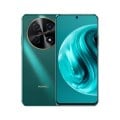
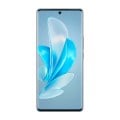
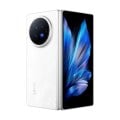
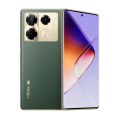
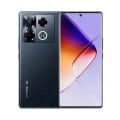


![Xiaomi Civi 4 Pro [Xiaomi 14 Lite] Full Review: Great Upgrades Here!](https://www.gizmochina.com/wp-content/uploads/2024/03/序列-01.00_01_01_07.Still050111-100x70.jpg)
